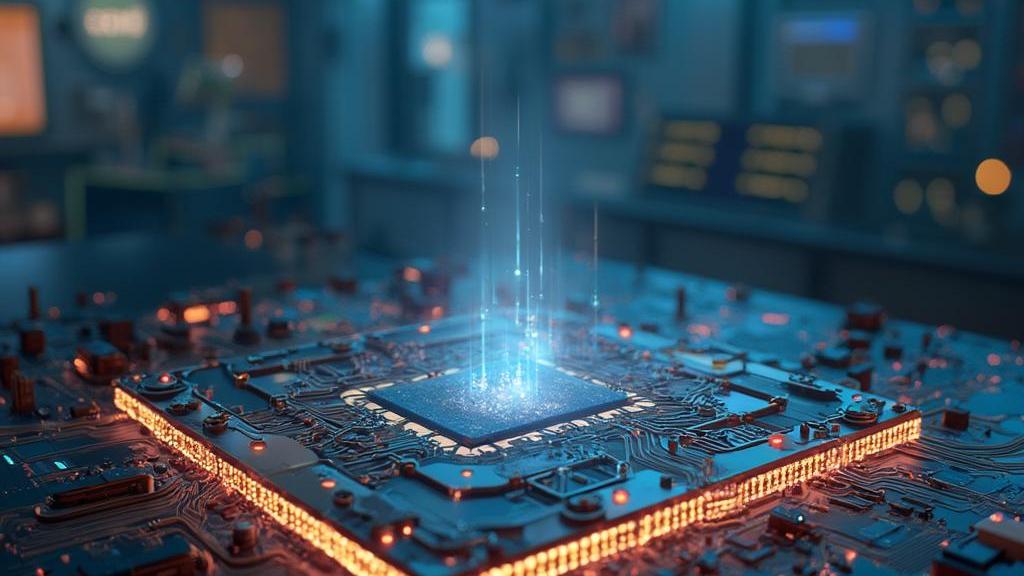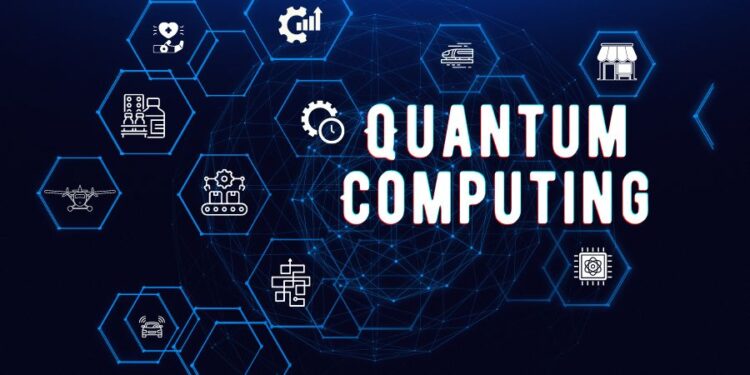The Quantum Leap in Processor Speed
For decades, the foundation of modern technology has rested on the binary principles of classical computing. From our smartphones to the world’s most powerful supercomputers, every operation is performed using bits—units of information that can exist in one of two distinct states: a 0 or a 1. This system has driven unprecedented innovation, but it is now reaching its physical limits. As transistors shrink to the atomic scale, the laws of classical physics begin to falter, and the promises of Moore’s Law—that processor power will double roughly every two years—are starting to slow. This looming ceiling has led scientists and engineers to search for a new frontier, a new paradigm of computation, and they have found it in the strange and counter-intuitive world of quantum mechanics.
Quantum computing is not an evolution of classical computing; it is a revolution. It leverages the bizarre properties of subatomic particles to perform calculations in a fundamentally different way. At the heart of this revolution lies the quantum processor, a marvel of engineering that promises to solve problems that are utterly impossible for even the most powerful supercomputers of today. The power of these processors is not simply in being “faster” in the classical sense, but in their ability to perform calculations on a scale that grows exponentially, unlocking a new era of scientific discovery, technological innovation, and data analysis. This article delves into the core principles, groundbreaking achievements, and immense challenges that define the race to build the ultimate quantum processor.
The Foundations of a New Computing Paradigm
To understand why a quantum processor is so powerful, we must first appreciate the fundamental difference between classical and quantum information.
A. The Classical Bit vs. The Quantum Qubit
A classical computer processes data using bits. A bit can be thought of as a simple light switch: it’s either on (1) or off (0). A string of bits, such as 0110, can represent a piece of information, and the number of states it can be in is limited to the combinations of 0s and 1s.
The quantum bit, or qubit, is the basic unit of information in a quantum computer. It is not constrained to a simple 0 or 1. Thanks to a principle of quantum mechanics called superposition, a qubit can exist as a 0, a 1, or both simultaneously. Imagine a spinning coin: while it’s in the air, it’s not yet heads or tails. It exists in a state of superposition until it lands. A qubit is like a coin spinning in mid-air, able to represent both states at once. This ability to exist in multiple states at the same time is the secret to a quantum processor’s immense power.
B. How a Quantum Processor Is Different
Unlike a silicon-based classical processor, a quantum processor is a delicate and complex machine designed to maintain the fragile quantum state of its qubits. The physical realization of a qubit can vary. Some companies, like Google and IBM, use superconducting circuits that are cooled to temperatures colder than deep space to eliminate environmental noise. Others, such as IonQ, use trapped ions held in place by electromagnetic fields and manipulated with lasers.
Regardless of the technology, the fundamental goal is the same: to isolate the qubits from their environment to prevent a process called decoherence, where their superposition state collapses back to a classical 0 or 1. This extreme isolation and precision engineering are what make quantum processors a marvel of modern science.
The Quantum Engine: Key Drivers of Speed
The “speed” of a quantum processor isn’t measured in gigahertz like a classical CPU. Its power comes from its unique ability to handle complex problems.
A. Superposition and Parallelism
The ability of a single qubit to exist in a superposition of states is where the exponential power begins. A quantum processor with just a handful of qubits can represent a vast number of states simultaneously. For instance, a system with two qubits can exist in a superposition of four states (00, 01, 10, and 11) at once. A three-qubit system can exist in a superposition of eight states. The number of states grows exponentially with each added qubit (, where ‘n’ is the number of qubits).
This means that instead of a quantum computer having to perform a calculation one by one, like a classical computer, it can perform an immense number of calculations at the same time, exploring all possible solutions to a problem simultaneously. This is the essence of quantum parallelism and is the primary reason why quantum processors are so much more powerful for certain types of problems.
B. Entanglement for Exponential Power
Entanglement is perhaps the most bizarre and powerful principle of quantum mechanics. When two or more qubits become entangled, their fates are intertwined in a way that is independent of the distance between them. If you measure the state of one entangled qubit, you instantly know the state of its entangled partner, no matter how far away it is. This “spooky action at a distance,” as Albert Einstein called it, allows a quantum processor to create a single, incredibly complex quantum state from multiple qubits.
Entanglement links the qubits together, ensuring that the exponential increase in power derived from superposition is harnessed effectively. It is entanglement that allows a small number of qubits to represent a state space so vast that it would overwhelm the memory of a classical supercomputer. The combined power of superposition and entanglement is what makes a quantum processor an entirely new class of machine.
C. Quantum Algorithms
The hardware is only part of the story. The software—the algorithms—must also be designed to harness quantum properties. Quantum algorithms are specially crafted to take advantage of superposition and entanglement.
- Shor’s Algorithm, for example, is a quantum algorithm that can find the prime factors of large numbers exponentially faster than any known classical algorithm. This has major implications for cybersecurity, as it could break many of the encryption methods we use today.
- Grover’s Algorithm offers a quadratic speedup for searching an unsorted database. While not as dramatic as Shor’s, this is still a major improvement for specific search problems.
These and other quantum algorithms are the key to unlocking the true potential of quantum processors, allowing them to solve problems that are currently intractable.
The Race for Quantum Supremacy: Major Breakthroughs
The development of quantum processors is a high-stakes race with leading tech companies and nations vying for dominance. In recent years, a number of significant milestones have been reached.
A. IBM’s Advancements
IBM has been a major player in quantum computing for decades. They have followed a clear roadmap to build larger and more powerful processors, from their early 5-qubit machines to their ambitious “Osprey” (433 qubits) and “Condor” (1,121 qubits) processors. IBM’s strategy focuses on building a full-stack quantum ecosystem, including not just the hardware but also the software, tools, and cloud access to make quantum computing accessible to researchers and developers.
B. Google’s Landmark Achievement
In 2019, Google’s quantum team made a landmark claim of achieving “quantum supremacy” with their “Sycamore” processor. The 53-qubit machine was able to perform a specific calculation in just 200 seconds—a task that Google’s researchers estimated would have taken the world’s fastest supercomputer approximately 10,000 years to complete. While the specific problem was contrived and has since been disputed in terms of its classical difficulty, this achievement was a major milestone. It was the first time a quantum computer demonstrably solved a problem that was practically impossible for a classical computer, proving the potential of the technology.
C. The Role of Trapped Ion Systems
While superconducting qubits have garnered significant attention, trapped ion systems are also a leading candidate for building powerful quantum processors. Companies like IonQ and Quantinuum have made significant strides in this area. Trapped ion qubits tend to have a lower error rate than superconducting qubits and can maintain coherence for longer periods. The scalability and engineering challenges are different, but the progress in this field shows that there are multiple viable paths to building a truly useful quantum computer.
The Immense Challenges to Overcome
Despite the incredible progress, quantum processors are still in their infancy, and there are monumental challenges that must be overcome before they become a practical reality.
A. Qubit Decoherence
The biggest obstacle to building a stable, reliable quantum computer is decoherence. Qubits are incredibly fragile and their quantum state collapses back to a classical state when they interact with their environment. Even the slightest vibration, temperature fluctuation, or stray electromagnetic field can disrupt the system. This is why superconducting quantum computers must operate at temperatures near absolute zero, and trapped ion systems must be kept in an ultra-high vacuum.
B. Quantum Error Correction
Because qubits are so susceptible to errors, a mechanism for quantum error correction is essential. However, this is far more difficult than classical error correction. A classical bit error can be fixed by simply making copies of the data, but the “no-cloning theorem” of quantum mechanics prevents us from doing this with qubits. Instead, quantum error correction requires a complex system where a large number of fragile physical qubits are used to create a single, stable logical qubit. The sheer number of physical qubits needed for this is a major engineering and scalability challenge.
C. Scalability and Engineering
Building a quantum processor is an engineering nightmare. Current systems are housed in large, complex, and incredibly expensive refrigeration units. Scaling these systems to thousands or even millions of qubits while maintaining the extreme isolation and precision required is one of the most difficult engineering challenges of our time. The control systems needed to manipulate the qubits are also a major hurdle, requiring highly sophisticated electronics.

The Future Landscape: Implications and Applications
While a fully functional, large-scale quantum computer is still some way off, the advancements in quantum processors promise to unleash a new wave of innovation across a wide range of fields.
A. Drug Discovery and Materials Science
One of the most promising applications is in molecular simulation. A quantum computer can simulate the interactions of molecules at a quantum level, which is impossible for classical computers. This will revolutionize drug discovery, allowing researchers to screen for new drug candidates and design new materials with specific properties, such as high-temperature superconductors, with unprecedented speed and accuracy.
B. Financial Modeling
Quantum processors could optimize complex financial models and risk analysis. They could be used to manage vast portfolios, predict market fluctuations, and find arbitrage opportunities that are too subtle for classical systems to detect.
C. Artificial Intelligence and Machine Learning
Quantum computing has the potential to supercharge AI and machine learning. By processing massive datasets and exploring complex patterns simultaneously, quantum processors could lead to breakthroughs in neural networks, natural language processing, and advanced machine learning algorithms.
D. Cybersecurity and Cryptography
This is the most dual-edged application. On one hand, a large-scale quantum computer would be capable of breaking the public-key cryptography that secures most of our internet communications today. This has led to the development of post-quantum cryptography, new encryption methods designed to be unbreakable even by a quantum computer. On the other hand, quantum communication systems could be created that are fundamentally unhackable, secured by the laws of physics themselves.
The quantum leap in processor speed is not merely a technological advancement; it is a fundamental shift in our ability to compute. While the challenges are immense, the potential rewards are even greater. The future is not one where quantum computers replace classical ones entirely, but one where they work in tandem, with quantum machines solving the specific, intractable problems that will define the next era of human progress.










